Enjoy FREE Shipping on Orders Over $99
DON’T HAVE A COUPON CODE?
Use EZ10OFF At Checkout to Save 10% On Your Entire Order Today!
11 Foods Proven to Lower Blood Pressure
Hey there. It’s Matt, Senior Nutritionist with Healthy Habits.
Did you know that high blood pressure affects over 70-million American adults?
Also known as hypertension, high blood pressure is the stealthy, sometimes invisible killer of millions of people in the United States and around the world every year. Often, you won’t feel a thing for years, even decades, while the damage to your cardiovascular system mounts. Finally, one day when blasting through a workout or simply relaxing, it happens—a heart attack or stroke that either ends or forever alters your life.
High blood pressure affects 1 in 3 American adults, and once their blood pressure rises, it’s very hard to bring down. For most people, this involves relaxing and sleeping more, exercising regularly, taking medications daily and (perhaps hardest of all) changing eating habits. The cruel twist? Feeling stressed by all of this will only make things worse.
Normalizing blood pressure is one of the most important things—if not the most important thing—you can do to improve your health and increase your life span. Fortunately, there are alternatives to popping pills: Many foods can lower blood pressure naturally. Rather than cutting things out, science shows that you can really benefit from adding these into your diet.
With that in mind, check out this list of foods that can help lower blood pressure and reduce your risk of heart disease:
Beetroot
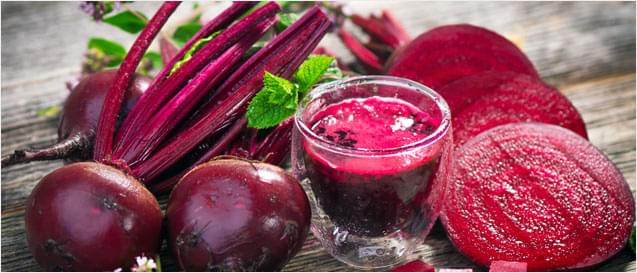
Nitrates and nitrites are compounds that play a big part in our metabolic system. The influence they have can be quite confusing, but it’s definitely worth understanding if you’ve got blood-pressure problems.
Many believe nitrates and nitrites are unnatural, although that’s not actually the case. They are commonly added to foods as preservatives, but they are also naturally produced by your body for saliva. Nitrates and nitrites can be converted into two different compounds: nitrosamines (very bad) or nitric oxide (very good).
Nitrosamines are produced when nitrites are exposed to extremely high temperatures. Think frying nitrites in preservative-loaded bacon, or the nitrites in cigarettes. Most of these increase your risk for cancer.
Nitric oxide (NO), on the other hand, acts as a signaling molecule that’s beneficial to health. It gives signals to the cells in your arteries, telling them to soften and relax. This action greatly improves vasodilation, which reduces blood pressure.
For this reason, nitrate-rich foods that are not exposed to very high heat are beneficial because they can become nitric oxide. What most don’t realize is that vegetables are the largest source of nitrates in the human diet.
Beetroot is the best of the bunch, with most research focusing on beetroot juice supplementation. A 2013 review looked at the results of 16 clinical trials on the topic and found that beetroot juice intake reduces blood pressure by 4-10 mmHg in just a few hours. A reduction of at least 5 mmHg in blood pressure reduces your risk of a fatal stroke by 14% and cardiovascular disease by 9%.
Garlic
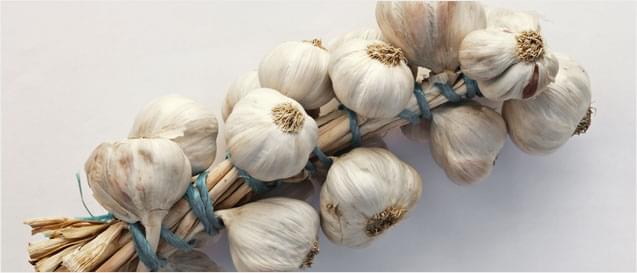
Did you know garlic was not historically used for cooking?
For the longest time, garlic’s main use was for health and medicinal purposes. This has been documented by major civilizations such as the ancient Egyptians, Babylonians, Greeks, Romans and Chinese. The active ingredient in garlic is allicin, a sulphur compound formed when a garlic clove is crushed, chopped or chewed.
Several human studies have shown that supplementing with garlic significantly lowers elevated blood pressure. One study even found garlic was just as effective as prescribed medications after 24 weeks.
Considering that garlic also reduces LDL cholesterol (or, “bad” cholesterol) by 10-15%, adding more garlic to your diet is an absolute necessity, in my opinion. These results have been seen with supplementation of 600-1,200 mgs per day (equal to eating at least two garlic cloves daily).
There is one strong side effect though: garlic breath!
Fish Oil
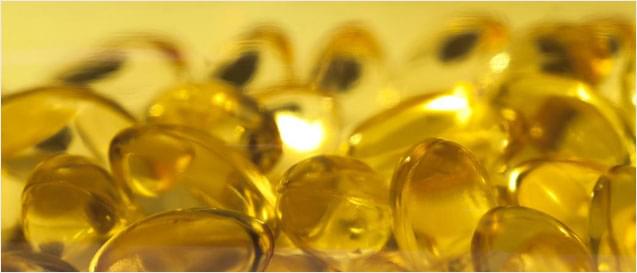
Fish oil refers to the natural fatty acids found in certain fish species. These fatty acids (such as omega-3 fats) are extremely beneficial to human cardiovascular health. Many human trials and reviews have found fish-oil supplementation to be an effective treatment for high blood pressure. However, benefits are only seen in people with existing hypertension.
The mechanism of effect is not clear, but most experts believe it has to do with the omega-6/omega-3 ratio. Essentially, having more omega-3 fats in your diet (compared to omega-6 fats) is better for your heart health. A 1:1 ratio is linked with much healthier and stronger blood vessels.
Our ancestors were thought to have an omega-6/omega-3 ratio of between 1:1 and 4:1. However, due to the heavy use of vegetable oils today, the average Western diet has a ratio of 16:1. In other words, for every 16 grams of omega-6 fats consumed, we consume only 1 gram of omega-3.
Improving your ratio even to 4:1 is associated with a 70% decrease in cardiovascular-related death. The best way to do this is by consuming more omega-3 fats such as oily fish, olive oil, walnuts and flaxseed. It also helps to limit other seed/vegetable oils, which tend to be high in omega-6 fats.
Fish-oil supplements are an effective and more affordable alternative to eating oily fish. (Recommended: Dr. Tobias Optimum Omega 3 Fish Oil, found at http://amzn.to/28MEw87.) However, if you have access to fish, 2-3 servings per week should provide heart-healthy benefits.
Cashews and Almonds
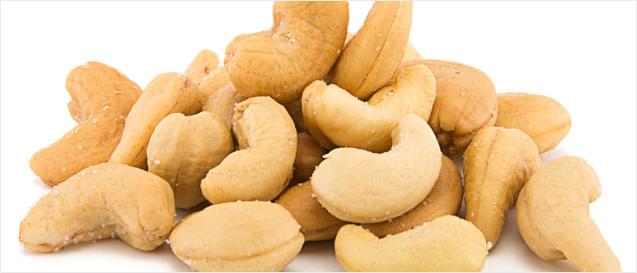
Not to be confused with peanuts (which come from the ground), tree nuts are linked with many metabolic health benefits. Almonds and cashews really stand out, particularly when it comes to metabolic problems such as high blood pressure.
What makes them so influential is their rich magnesium content. Magnesium is an essential mineral involved in over 300 bodily process. A lack of magnesium in the diet is strongly associated with blood-pressure complications. Replacing that lack of magnesium has been shown in numerous studies to greatly reduce high blood pressure. Approximately 68% of U.S. adults are magnesium-deficient.
Interestingly, one study on type 2 diabetics only saw reductions in blood pressure once vitamin C and E were added to their magnesium supplementation. If you’re diabetic, this is something to keep in mind if you do decide to use supplements rather than whole foods.
The current recommended daily intake for magnesium in the U.S. is 310-420 mgs. One cup of almonds or cashews provides 360 mgs, which is what I recommend to clients to help maintain optimum levels.
Kale

Kale is one of the few “superfoods” that actually earns that moniker. Like spinach, it’s loaded with vitamins, minerals, antioxidants and other compounds known to help prevent disease.
However, the reason kale may reduce high blood pressure is because of its unique nutrient profile. It’s rich in magnesium, potassium and vitamin C. A diet high in potassium is strongly linked to lower blood pressure. This could be because magnesium’s effect on blood pressure is enhanced when combined with more potassium. In some cases, this combination can lower blood pressure as much as medications.
Unfortunately, most people no longer consume much potassium. Our hunter-gatherer ancestors consumed around 10,500 mgs of potassium per day, whereas the average American today takes in only 2,800 mgs per day.
I prefer kale over spinach because it has four times more vitamin C! Similar to the potassium-magnesium relationship, vitamin C appears to increase the blood-pressure-lowering effects of magnesium, as well as increase potassium in the blood.
Kale’s nutrient trio of magnesium, potassium and vitamin C makes it unrivalled for blood-pressure control and minimizing disease risk. If you only pick one leafy green vegetable, make it kale.
Stevia
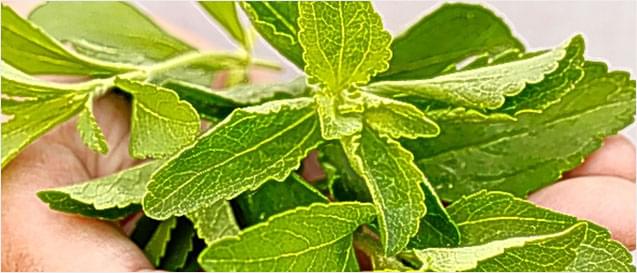
With refined sugar now recognized as harmful, sweetener alternatives have become incredibly common. Stevia is one of the more popular choices. It’s is one of the few natural sweeteners. It doesn’t jack up your blood sugar and it doesn’t have the same health question marks that dog many artificial sweeteners on the market.
The two active ingredients that make stevia sweet are stevioside and rebaudioside A.
A one-year trial on participants with high blood pressure found that those given 750 mgs of stevioside per day decreased their systolic blood pressure by 8.1% and diastolic blood pressure by 13.8% after three months. Impressively, they were able to maintain this reduction for the next nine months.
Another study using high doses of stevioside (1,500 mgs per day) noted that after two years, blood pressure decreased by 6.5%.
If you’re looking to replace sugar (or you’re already using another type of sweetener), stevia appears to be the best choice for those with elevated blood pressure. It’s by no means a quick fix, but the long-term effects seem to be safe and may even be beneficial.
Tumeric
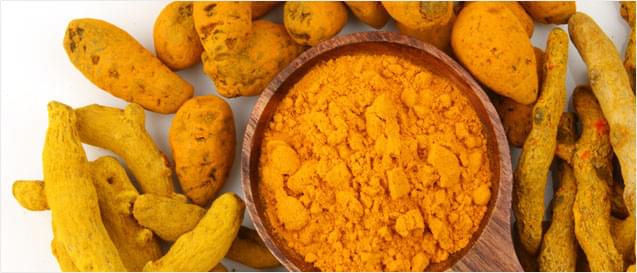
Turmeric is a popular Indian curry spice. For centuries, Indians used it not only in their cooking but also as a medicinal herb. And they were on to something.
Turmeric’s medicinal properties have only recently been confirmed by science and are very impressive. The main active ingredient in turmeric is curcumin, which has powerful anti-inflammatory effects in the body.
In a study of 32 post-menopausal women, supplementing with 150 mgs of curcumin for 8 weeks successfully improved blood flow to levels seen in those who exercise three times per week. Another human study using 500 mgs of turmeric three times per day reported large decreases in blood pressure in subjects with nephritis (or, inflammation of the kidneys). Those with cardiovascular issues (particularly diabetics) are at high risk for such kidney problems.
The benefits curcumin has on blood flow and blood pressure are believed to be related to nitric oxide, similar to beetroot mentioned above. Supplementation of curcumin has shown to increase circulating nitric oxide by up to 40% in just four weeks. These potential cardiovascular benefits are too great to ignore, especially if you are at high risk of complications.
There is just one problem with curcumin: Humans are very bad at absorbing it. For any noticeable health benefits, it’s essential to consume curcumin with an enhancer such as black pepper. Black pepper contains piperine, an alkaloid that boosts curcumin absorption by a whopping 2,000%.
Add plenty of pepper to your turmeric-based curry. Or if you decide to supplement, eat some whole peppercorns at the same time.
Green Tea

Traditionally from China, green tea is loaded with an array of powerful compounds and antioxidants unrivalled by any other food.
The reason that green tea (and tea in general) is so beneficial is because of its polyphenols. One particular green tea polyphenol known as catechin has shown to improve blood flow and blood pressure. Like beetroot and curcumin, the mechanism is thought to involve nitric oxide.
A large review of green tea confirmed that 2 cups per day (500 milliliters) can increase arterial diameter by up to 40%. Just as wider pipes will increase water flow, wider and more relaxed blood vessels increase blood flow, reducing pressure. It’s no real surprise then that regular green tea drinkers have up to a 31% lower risk of cardiovascular disease.
According to the Centers for Disease Control and Prevention, consuming too many saturated and trans fats increases your LDL cholesterol (or, “bad” cholesterol). High LDL levels may worsen your hypertension, and may eventually lead to coronary heart disease.
Green Coffee
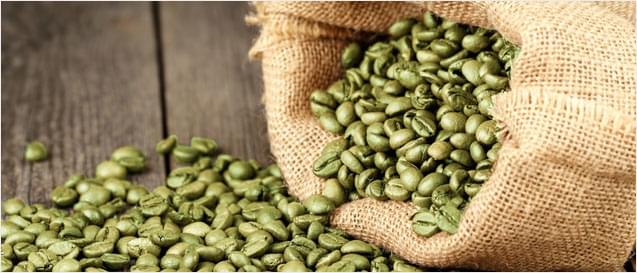
Coffee beans are naturally green, but roasting turns them brown. So green coffee is just another name for unroasted coffee.
While roasted coffee beans have a similar chemical composition to green coffee beans, the roasting process destroys much of its chlorogenic acid. This is the active ingredient that gives green coffee beans additional health properties, including blood-pressure reduction.
One 12-week study using 480 mgs of green coffee extract (equal to 140 mgs of chlorogenic acid) found it reduced heart rate and blood pressure by about 8%. These benefits were maintained for 12 weeks of supplementation, but only in those who began with high blood pressure. What’s more, benefits were lost once supplementation stopped.
Theoretically, drinking more green coffee should have much of the same benefits as supplementing, but it depends on the chlorogenic acid concentration. Doses used in these studies were equivalent to 120-300 mgs chlorogenic acid.
Try swapping your regular coffee for green coffee and then checking for any blood pressure changes after a month.
Vitamin K2
For decades, we’ve been told to cut all fats from our diets. Unfortunately, these recommendations were based on bad science.
In looking at fat intake and blood pressure specifically, full-fat dairy may be beneficial as it contains vitamin K2, which helps regulate where calcium ends up in the body. It works to keep calcium in your bones and removes it from blood vessels where it can cause arterial stiffness and calcification.
While no studies yet exist that measure the direct effect of K2 on blood pressure, it makes sense that K2 would be beneficial given its relationship with vascular health.
A soon-to-be published observational study (one of Europe’s biggest) found that those who eat 8 portions of high-fat dairy per day are 23% less likely to get type 2 diabetes than those eating 1 portion per day. Blood pressure is a key predictor of vascular diseases such as heart disease and type 2 diabetes.
Full-fat, grass-fed dairy products are by far the best sources of vitamin K2. This includes butter, cheese, full-fat yogurt and ghee (a class of clarified butter). Liver and other organs are good sources too, as are fermented foods such as sauerkraut, natto and miso (both traditional Japanese foods). If those food sources are not an option for you, supplementation is a valid alternative, and should be taken alongside vitamin D for maximum effect.
In my opinion, we should all be increasing our vitamin K2 intake as a preventative measure for heart health. This is especially true if you are particularly vulnerable to artery calcification from having diabetes or a family history of high cholesterol and blood pressure.
Extra-Virgin Olive Oil

Olive oil is probably the healthiest oil in the world. It’s a staple of Mediterranean-style diets and is rich in heart-healthy monounsaturated fats and phenolic antioxidants. Extra-virgin olive oil has the highest levels of beneficial components because it is the least processed form of olive oil.
The cardiovascular benefits of olive oil are certainly no secret, with one major study finding that it reduced heart attacks, strokes and death by a whopping 30%.
It’s no surprise then that olive oil is a fantastic food for lowering blood pressure.
In a study of 23 participants with high blood pressure, extra-virgin olive oil reduced blood pressure by 48% compared with sunflower oil. Olive oil intake even cut the need for blood pressure medications in 8 of those participants.
Your Diet Is Just the Beginning
Of course, many other factors influence blood pressure. These include physical activity, adequate sleep, sun exposure, meditation and other stress-management practices. In the end, however, the majority of these link back to diet. What goes into your mouth is certainly the most influential factor at play.
There are so many natural foods that may help lower your blood pressure—especially if you’re struggling to manage it without pharmaceutical drugs. It’s just a matter of trying them out for yourself.
Speaking of natural treatments for high blood pressure, did you know that there’s a new all-natural way to reduce both systolic and diastolic blood pressure that takes only seconds a day?
In fact, this simple, all-natural and affordable treatment has been clinically proven to help reduce blood-pressure levels, improve blood circulation, lower bad cholesterol and balance blood sugar levels while also delivering a jolt of antioxidants to your cells to promote improved overall health.
Would you like to learn how you can reduce your blood pressure to healthy levels quickly, safely and affordably?
We show you exactly how to do it HERE:
Wishing you good health through wise nutrition,